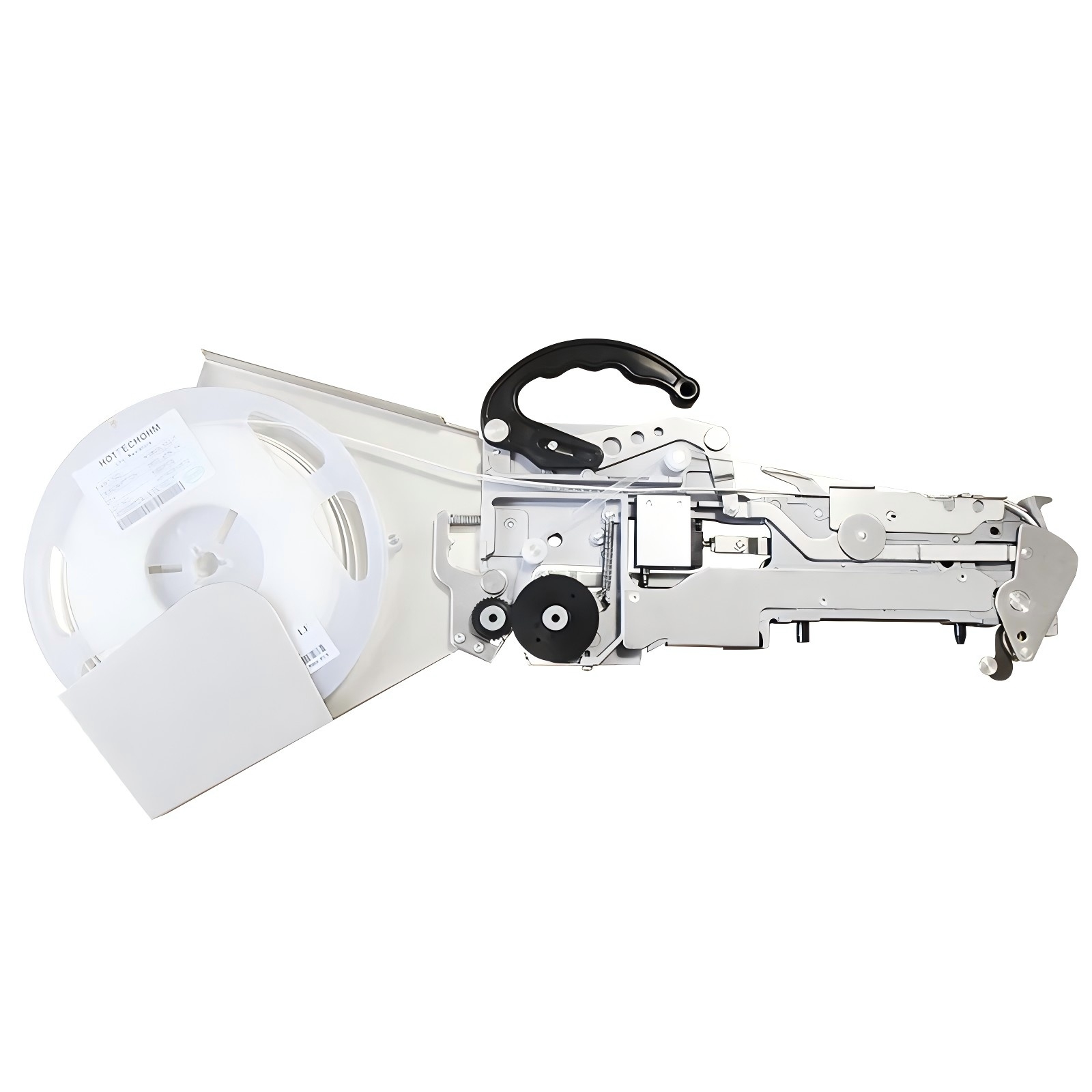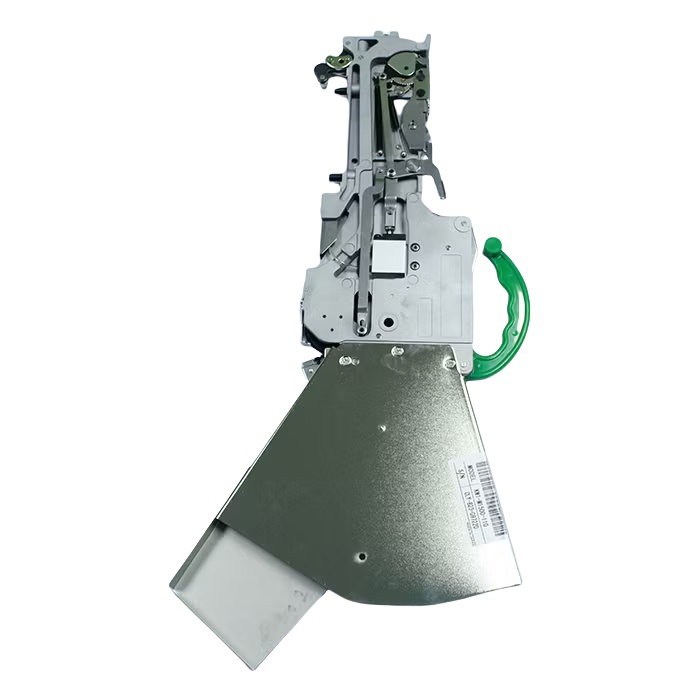Content Menu
>> Understanding Yamaha SMT Feeders
>>> Types of Yamaha SMT Feeders
>> The Role of Yamaha SMT Feeders in Production Efficiency
>> Advanced Features of Yamaha SMT Feeders
>> Why Choose Global Soul Limited as Your Yamaha SMT Feeder Supplier?
>> Case Studies: Success Stories with Yamaha SMT Feeders
>>> Case Study 1: High-Speed PCB Assembly
>>> Case Study 2: Flexibility in Production Runs
>> Future Trends in Electronics Manufacturing
>> Conclusion
>> Frequently Asked Questions
Understanding Yamaha SMT Feeders
Yamaha SMT feeders are specialized devices designed to supply components to pick-and-place machines during the assembly of printed circuit boards (PCBs). These feeders come in various configurations to accommodate different types of components, including reels, trays, and sticks. The versatility of Yamaha feeders allows manufacturers to optimize their production processes by ensuring that components are delivered accurately and efficiently.
Types of Yamaha SMT Feeders
1. Reel Feeders:
- Auto Loading Feeder (ALF): This feeder allows for simultaneous loading of two reels, minimizing downtime during production. The ALF is particularly beneficial for high-volume production lines where speed is essential.
- Standard Reel Feeders: These are used for standard component reels and are essential for high-speed assembly lines. They can handle various reel sizes and configurations, making them adaptable to different production needs.
2. Tray Feeders:
- Automatic Tray Suppliers (ATS): These feeders can handle multiple trays and allow for non-stop operation by reloading trays while the machine is running. They are particularly useful for components that come in trays rather than reels, such as larger or more delicate components that require careful handling.
- Manual Tray Feeders: While less common in high-speed environments, manual tray feeders can be used for smaller production runs or specialized applications where flexibility is required.
3. Stick Feeders:
- Designed for components supplied on sticks, these feeders can be configured with various adapters to accommodate different stick sizes. Stick feeders are particularly useful for handling odd-shaped components or those that cannot be easily placed in reels or trays.

The Role of Yamaha SMT Feeders in Production Efficiency
The integration of Yamaha SMT feeders into manufacturing processes significantly enhances efficiency through:
- Reduced Downtime: With features like auto-loading and tray exchange capabilities, these feeders minimize interruptions in production. This is crucial in maintaining a steady workflow and meeting tight deadlines.
- Increased Accuracy: Yamaha's advanced technology ensures precise placement of components, reducing errors and waste. Accurate component placement is vital for ensuring the quality and reliability of the final product.
- Flexibility: The ability to switch between different feeder types allows manufacturers to adapt quickly to changing production needs. This adaptability is essential in today's fast-paced electronics market, where product lifecycles are shorter than ever.
Advanced Features of Yamaha SMT Feeders
Yamaha SMT feeders come equipped with several advanced features that further enhance their performance:
- Smart Technology Integration: Many Yamaha feeders incorporate smart technology that allows them to communicate with other machines on the production line. This integration facilitates real-time monitoring and adjustments, ensuring optimal performance.
- User-Friendly Interfaces: Modern Yamaha SMT feeders feature intuitive user interfaces that simplify setup and operation. Operators can easily program feeder settings and monitor performance metrics without extensive training.
- Maintenance Alerts: Advanced models include built-in maintenance alerts that notify operators when servicing is required. This proactive approach helps prevent unexpected breakdowns and extends the lifespan of the equipment.
Why Choose Global Soul Limited as Your Yamaha SMT Feeder Supplier?
Global Soul Limited stands out as a reliable supplier of Yamaha SMT feeders due to several key factors:
- Expertise in SMT Solutions: With over a decade of experience, GS-SMT has developed a deep understanding of the needs and challenges faced by electronics manufacturers. Their team consists of industry experts who can provide tailored solutions based on specific requirements.
- Quality Assurance: GS-SMT prioritizes quality in all its products, ensuring that customers receive durable and reliable feeders. Each feeder undergoes rigorous testing before it reaches customers, guaranteeing performance consistency.
- Comprehensive Support: The company offers extensive support services, including installation, maintenance, and troubleshooting for all its products. Their dedicated customer service team is always ready to assist clients with any inquiries or issues they may encounter.
Case Studies: Success Stories with Yamaha SMT Feeders
Case Study 1: High-Speed PCB Assembly
A leading electronics manufacturer faced challenges with component supply on their high-speed assembly line. After integrating Yamaha ALF feeders from GS-SMT, they reported a 30% increase in production efficiency due to reduced downtime and improved accuracy in component placement.
Case Study 2: Flexibility in Production Runs
Another client specializing in custom electronics needed a flexible solution for varying production runs. By utilizing a combination of tray and stick feeders from GS-SMT, they were able to switch between different component types seamlessly, resulting in a 25% reduction in changeover time.
Future Trends in Electronics Manufacturing
As technology continues to advance, several trends are shaping the future of electronics manufacturing:
1. Increased Automation: The trend towards greater automation will likely lead to more sophisticated feeder systems that can handle an even wider variety of components without manual intervention.
2. Smart Manufacturing: The integration of IoT (Internet of Things) devices will enable real-time data collection from feeders and other machinery on the production line, allowing manufacturers to optimize operations dynamically.
3. Sustainability Initiatives: As environmental concerns grow, manufacturers will seek solutions that reduce waste and energy consumption. Efficient feeder systems will play a critical role in achieving these sustainability goals.
Conclusion
In conclusion, Yamaha SMT feeders play an essential role in modern electronics manufacturing by enhancing efficiency, accuracy, and flexibility on production lines. As a trusted supplier, Global Soul Limited is committed to providing high-quality solutions that meet the evolving needs of the industry. By choosing GS-SMT as your Yamaha SMT feeder supplier, you ensure that your manufacturing processes are equipped with the best technology available.

Frequently Asked Questions
1. What are the main types of Yamaha SMT feeders?
- The main types include reel feeders (like ALF), tray feeders (ATS), and stick feeders.
2. How do Yamaha feeders improve production efficiency?
- They reduce downtime through features like auto-loading and increase accuracy in component placement.
3. Why should I choose Global Soul Limited as my supplier?
- GS-SMT offers expertise in SMT solutions, quality assurance, and comprehensive support services.
4. Can I use different feeder types on the same production line?
- Yes, Yamaha feeders are designed to be flexible and can accommodate various component types simultaneously.
5. What support services does GS-SMT provide?
- GS-SMT offers installation, maintenance, and troubleshooting support for all its products.


































